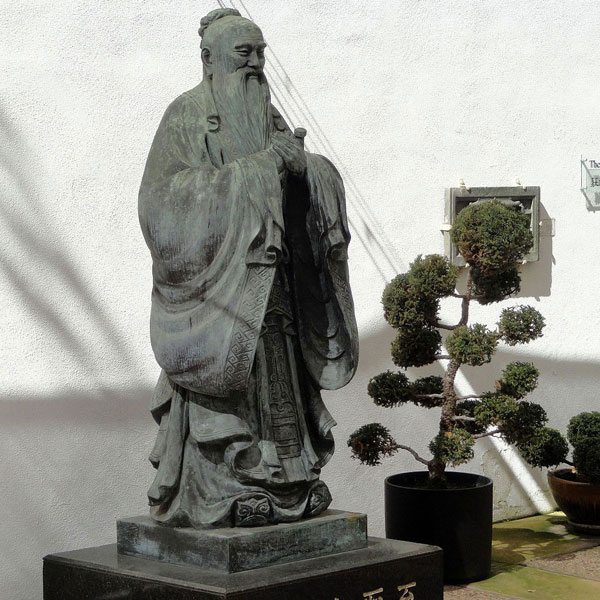
It’s often hard for a nonprofit entity to manage the transition from a founder to new leadership, but the San Diego Chinese Historical Museum (SDCHM) has made it much harder by failing to follow the rules of good board governance. Tiffany Wai-Ying Beres, the first executive director since founder Alexander Chuang, has brought a wrongful termination suit against the museum that may expose more than its leadership bargained for.
Before going into all of that, it is important to distinguish between nonprofits that emerge out of a founding board and those that come from a founder who gathers a board. Founding boards tend to have a very different set of problems with boundaries than do individual founders, and many founding board–type problems are exhibited in this story.
It seems like Beres was the best thing that could happen to the museum. According to SDCHM’s annual report, during her 2016–2017 tenure, the museum ran a net surplus, won its biggest grant ever, reached out and surveyed the community to help design a brand-new exhibit that garnered record attendance, and nearly doubled the number of events and attendees. Fifty-one percent of the donors in 2016–17 were new donors, showing an increased appeal and expanded growth capacity.
However, in June, a closed-session vote by the board of directors terminated Beres’s tenure. Michael Aguirre, the attorney representing the board against her, said, “She was fired because she was a destructive, uncaring insensitive employee who has retaliated with false allegations against the longtime management of the museum. What she really wants to do is take over the museum.”
The meeting itself is the subject of a separate member-initiated lawsuit that more broadly challenges board governance practices. The complaints include failing to have the requisite number of board members, failing to observe term limits, attempting to rewrite the bylaws to eliminate term limits, and seeking to “hand-pick and appoint new and additional directors, who would not be subject to membership election and vote.”
These complaints echo the problems raised by a report from the Museum Assessment Program (MAP) at the American Alliance of Museums that was conducted back in May. Cheryl Donaldson Moses, executive director of the Fort Collins Museum of Discovery, wrote to Beres, “You need to address the dysfunction in the board culture including the noncompliance of the bylaws as they pertain to board member term limits.”
Sign up for our free newsletters
Subscribe to NPQ's newsletters to have our top stories delivered directly to your inbox.
By signing up, you agree to our privacy policy and terms of use, and to receive messages from NPQ and our partners.
Donaldson Moses raised other concerns that match those alleged by Beres’s lawsuit. The San Diego Tribune said that Beres claimed “she was fired for trying to institute better management practices across the nonprofit, instead of operating it as a club for family and friends. Her claim is that she was wrongfully terminated as retaliation for whistle-blowing.” According to the Tribune, Beres “alleged the museum violated state labor laws by not paying overtime, terminated one worker over an unsubstantiated theft allegation and turned its multimillion-dollar endowment over to a personal friend of the board chairman.”
The MAP assessment likewise warned that “The compensation that is being offered by the organization to its staff is not competitive with the area or the museum market…and in some cases, may not even meet minimum wage requirements.” The 2016 Form 990 says that the organization spent $82,848 on officer and director salaries and $86,146 on other staff salaries and wages, which seems awfully low considering they had at least four employees plus Beres.
The Voice of San Diego reported that after Beres was fired, “three board members have resigned and the museum’s registrar quit. Voice of San Diego also obtained nine letters and emails from former donors, supporters and members who suspended funding and/or expressed disappointment in the board’s decision to fire Beres. Last week, two of the museum’s remaining four employees quit.”
NPQ has written frequently about these issues, including the importance of paying staff properly and the best practices for healthy board/director relationships. It seems the museum was taking advantage of devoted staff who wanted to serve the mission despite the founding director’s unwillingness to evolve.
“We have a difference of opinion about how to run the museum,” Chuang said of Beres. “She is more like the modern way to run like a library—paperless. I am more like a traditional library.” He contested her claim that “within two or three years, revenues and expenses should break even. Is this possible? The answer is no.”
Beres seems to think that it would be possible if the museum were more responsive to its community and more responsible about the way its board is run. Given the way her first year went, it’s not impossible to think she was right, but now we’ll never know.
Refusing to transfer leadership, hanging onto the founding board and its way of doing things, will stymie SDCHM into extinction if they’re not careful, even if they survive this double lawsuit. Beres’s attempts to impose principled governance on an entrenched board seems to have ended badly for her, but perhaps the enhanced level of public scrutiny will bring the shakeup the museum seems to need.—Erin Rubin












